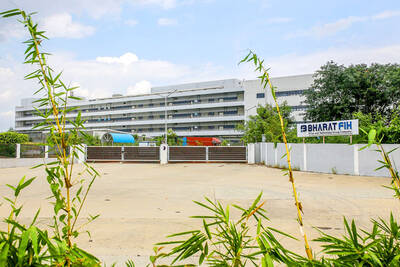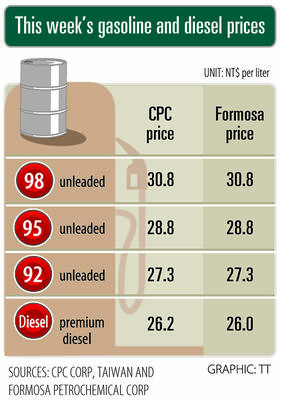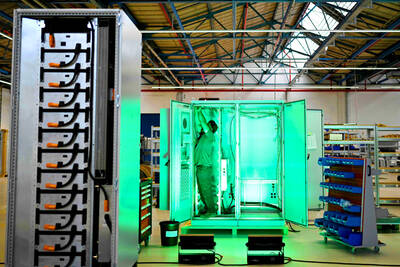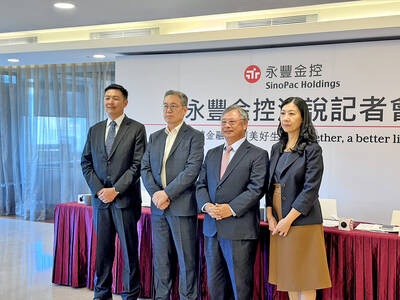Leofoo Tourism Group (六福旅遊集團) yesterday launched its fifth hotel brand, Courtyard by Marriott, in Taipei’s Nangang District (南港) to further tap into the nation’s fast-growing hospitality industry.
With 465 rooms on floors seven through 30 of a complex housing high-speed rail, regular train and Taipei MRT stations, the Courtyard by Marriott Taipei targets both business and leisure travelers and aims to break even in two years, Leofoo chief operating officer Lulu Chuang (莊豐如) said.
“The new hotel is expected to boost the group’s overall revenue next year and hopefully turn a profit in two years,” Chuang told a media briefing.
While the industry faces a challenging, slowing global economy and domestic political uncertainty, the group is to try its best to outperform peers, Chuang said.
The goal is achievable in light of a 40 percent revenue increase so far this year at the Westin Taipei (台北威斯汀六福皇宮), the group’s upscale hotel on Nanjing E Road, Chuang said.
The new hotel aims to benefit from convenient transportation, a minimalist design and cross-selling promotions, the hotelier said.
The upcoming high-speed rail station in Nangang would allow Courtyard guests more convenience when planning trips to the Leofoo Village Theme Park (六福村) and Leofoo Water Park (六福水樂園), group communications official Andreas Huang (黃伊康) said.
The partnership with Marriott International Inc, a US hospitality company that manages and franchises a broad portfolio of hotels and lodging facilities, is expected to help Courtyard Taipei gain popularity, Huang said.
The new hotel is positioned as a five-star facility in Taiwan, although the brand ranks four stars in other markets, due to extra services available here, Huang said.
The Courtyard Taipei plans to achieve an occupancy rate of between 60 percent and 70 percent in the first quarter of next year, with average daily room rates of between NT$6,000 and NT$6,500 (US$182 and US$197), Huang said.
The hotel has a lounge, two restaurants and several conference facilities, the group said, adding that it invested NT$1 billion in the new venture as part of the Ruentex Group’s (潤泰集團) 50-year build-operate-transfer (BOT) Nangang Station development project.
Other hoteliers are expected to soon establish a presence in the area, which is only a five-minute ride by MRT from the Taipei World Trade Center Nangang Exhibition Hall.

SETBACK: Apple’s India iPhone push has been disrupted after Foxconn recalled hundreds of Chinese engineers, amid Beijing’s attempts to curb tech transfers Apple Inc assembly partner Hon Hai Precision Industry Co (鴻海精密), also known internationally as Foxconn Technology Group (富士康科技集團), has recalled about 300 Chinese engineers from a factory in India, the latest setback for the iPhone maker’s push to rapidly expand in the country. The extraction of Chinese workers from the factory of Yuzhan Technology (India) Private Ltd, a Hon Hai component unit, in southern Tamil Nadu state, is the second such move in a few months. The company has started flying in Taiwanese engineers to replace staff leaving, people familiar with the matter said, asking not to be named, as the

The prices of gasoline and diesel at domestic fuel stations are to rise NT$0.1 and NT$0.4 per liter this week respectively, after international crude oil prices rose last week, CPC Corp, Taiwan (台灣中油) and Formosa Petrochemical Corp (台塑石化) announced yesterday. Effective today, gasoline prices at CPC and Formosa stations are to rise to NT$27.3, NT$28.8 and NT$30.8 per liter for 92, 95 and 98-octane unleaded gasoline respectively, the companies said in separate statements. The price of premium diesel is to rise to NT$26.2 per liter at CPC stations and NT$26 at Formosa pumps, they said. The announcements came after international crude oil prices

A German company is putting used electric vehicle batteries to new use by stacking them into fridge-size units that homes and businesses can use to store their excess solar and wind energy. This week, the company Voltfang — which means “catching volts” — opened its first industrial site in Aachen, Germany, near the Belgian and Dutch borders. With about 100 staff, Voltfang says it is the biggest facility of its kind in Europe in the budding sector of refurbishing lithium-ion batteries. Its CEO David Oudsandji hopes it would help Europe’s biggest economy ween itself off fossil fuels and increasingly rely on climate-friendly renewables. While

SinoPac Financial Holdings Co (永豐金控) is weighing whether to add a life insurance business to its portfolio, but would tread cautiously after completing three acquisitions in quick succession, president Stanley Chu (朱士廷) said yesterday. “We are carefully considering whether life insurance should play a role in SinoPac’s business map,” Chu told reporters ahead of an earnings conference. “Our priority is to ensure the success of the deals we have already made, even though we are tracking some possible targets.” Local media have reported that Mercuries Life Insurance Co (三商美邦人壽), which is seeking buyers amid financial strains, has invited three financial